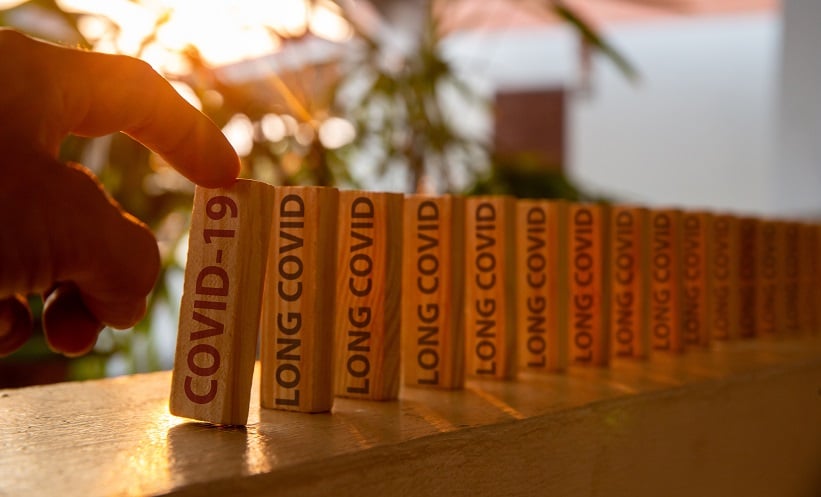Interview Summary
Chronic lymphocytic leukaemia (CLL) is a common type of leukaemia with a variable clinical course. Effective targeted therapies for CLL in first-line and in relapsed or refractory disease include covalent Bruton tyrosine kinase inhibitors (BTKi), such as ibrutinib, acalabrutinib, and zanubrutinib; B cell leukaemia/lymphoma 2 (BCL2) inhibitors, such as venetoclax; and anti-CD20 monoclonal antibodies, such as obinutuzumab. Despite these treatments, the management of patients with CLL remains challenging. For this article, EMJ conducted an interview in January 2025 with expert Talha Munir from the Leeds Teaching Hospitals NHS Trust, UK, to raise awareness of CLL and discuss the highlights from the 66th American Society of Hematology (ASH) Annual Meeting and Exposition held in December 2024. Munir, who has a wealth of experience and expertise in the clinical management of CLL, provided valuable insights on the interim analysis results from the AMPLIFY study with acalabrutinib–venetoclax ± obinutuzumab (AV/AVO) versus fludarabine–cyclophosphamide–rituximab (FCR) or bendamustine–rituximab (BR); data at a median follow-up of 5 years from the SEQUOIA study with zanubrutinib versus BR; and updated data from the BRUIN CLL-321 study with the non-covalent BTKi, pirtobrutinib versus idelaslisib (a phosphoinositide 3-kinase inhibitor)–rituximab (IdelaR) or BR. Also explored were the implications and importance of BTK mutations in CLL, as well as emerging results for the BTK degraders, NX-5948 and BGB-16673, and the bispecific antibody, epcoritamab. The use of continuous therapy and fixed-duration therapy in clinical practice was also described. Finally, Munir outlined potential future developments in the CLL space, including the possibility of individualised therapy.INTRODUCTION
CLL is one of the most common types of leukaemia,1-2 typically occurs in elderly individuals,3 and has a highly variable clinical course.2,4 Covalent BTKis,5 such as ibrutinib, acalabrutinib, and zanubrutinib;6,7 BCL2 inhibitors, such as venetoclax;9 and anti-CD20 monoclonal antibodies, such as obinutuzumab,8 are effective targeted therapies for patients with CLL, in first-line and for relapsed or refractory disease.9 However, the treatment of patients with CLL is challenging.10 The mutational status of the variable region of the Ig heavy chain gene (IGHV) is a powerful predictor of the progression-free survival (PFS) and overall survival with chemoimmunotherapy in patients with CLL.11 Furthermore, chromosome del(17p) and TP53 mutation in patients with CLL are associated with resistance to chemotherapy and a shorter time to progression with most targeted therapies.2
THE CURRENT LANDSCAPE OF CHRONIC LYMPHOCYTIC LEUKAEMIA
Munir described the current landscape of CLL as diverse, following improvements in treatment in the last decade, particularly in the frontline space. According to Munir, two main treatment concepts are being explored in CLL: continuous therapy, where patients continue on a BTKi until disease progression or significant toxicity,12,13 and fixed-duration therapy, which is a combination of venetoclax-based therapy with either an anti-CD20 monoclonal antibody14 or a BTKi, for a set duration (12–15 months).15 Munir suggested that clinical trials are needed to assess whether treatment intervention in ‘watch and wait’ patients can reduce the bulk of the disease and improve survival.16
INTERIM ANALYSIS RESULTS FROM AMPLIFY WERE A HIGHLIGHT OF ASH 2024
The interim analysis data (median follow-up: 41 months) from the AMPLIFY Phase III study were a highlight of ASH 2024.17 The primary endpoint was met, demonstrating superior PFS in first-line with fixed-duration AV/AVO versus FCR or BR in ‘fit’ patients with treatment-naïve CLL (hazard ratio [HR] versus FCR/BR: 0.65 and 0.42; p=0.0038 and p<0.0001, for AV and AVO, respectively; median PFS: not reached for AV or AVO versus 47.6 months for FCR/BR).19 Although the COVID-19 pandemic greatly impacted the study, the data indicated that AV and AVO provided deep and durable responses with a manageable safety profile. Munir disclosed that the improvement in PFS in the experimental arms versus the chemoimmunotherapy arm was not as large as expected, even considering the COVID-19-censored data, and there were more COVID-19-related deaths with triplet (AVO) versus doublet (AV) therapy.
ROBUST 5-YEAR DATA FROM THE SEQUOIA STUDY
The long-term data for patients with treatment-naïve CLL without del(17p) (Cohort 1) from the SEQUOIA Phase III study, presented at ASH 2024, showed that the PFS benefit with zanubrutinib was sustained and superior compared to that with BR, based on a median follow-up of 5 years.18 The median PFS was not reached for zanubrutinib and was 44.1 months (95% CI: 38.4–55.6) for BR (HR: 0.29; 95% CI: 0.21–0.40; one-sided p<0.0001).20 The estimated 60-month PFS rates were 76% (95% CI: 69–81) for zanubrutinib and 40% (95% CI: 33–47) for BR, with corresponding rates after adjustment for the impact of the COVID-19 pandemic of 79% (95% CI: 72–84) and 41% (95% CI: 33–48), respectively.20
The PFS benefit with zanubrutinib was sustained regardless of IGHV mutation status.20
Munir commented that the data from SEQUOIA are robust, clearly showing that zanubrutinib continues to be effective in patients with CLL compared with the standard chemoimmunotherapy arm, with PFS results as expected for single-agent zanubrutinib. The safety and tolerability profile of zanubrutinib at a median follow-up of 5 years was consistent with prior reports, and no new safety signals were observed.20 Munir emphasised that long-term follow-up of patients with CLL is becoming increasingly important, particularly in terms of assessing tolerability in an ageing patient population with developing comorbidities.
According to Munir, one of the strengths of the zanubrutinib data is the number of patients with TP53 mutation and/or 17p deletion CLL who have received the drug, forming a robust dataset. The 5-year SEQUOIA data for patients with TP53 mutation and/or 17p deletion CLL are awaited with interest.
BRUIN CLL-321 STUDY RESULTS CONFIRM PIRTOBRUTINIB IS RELEVANT IN THE RELAPSE/REFRACTORY SPACE
Another important piece of CLL research presented at ASH 2024 was the BRUIN CLL-321 Phase III study, which showed superior PFS with the non-covalent BTKi pirtobrutinib versus IdelaR or BR at a median follow-up of 11.6 months in heavily pretreated patients with CLL (HR: 0.55; 95% CI: 0.38–0.78; p=0.0007), based on the data in the Congress abstract.19 Updated data presented at the Congress showed superior PFS with pirtobrutinib at a median follow-up of 19.4 months (HR: 0.54; 95% CI: 0.39–0.75; nominal p=0.0002).21 Munir commented: “The PFS data for pirtobrutinib confirm that this BTKi is relevant in the relapse/refractory space. It would be interesting to see whether non-covalent BTKi therapy is more effective than covalent BTKi therapy in the frontline setting.”
MUTATIONS IN BRUTON TYROSINE KINASE AND CHRONIC LYMPHOCYTIC LEUKAEMIA
Patients with CLL receiving continuous BTKi therapy may develop resistance, and a very small percentage of patients who progress during treatment with a BTKi have BTK mutations that lead to impaired drug binding and ineffective inhibition of kinase activity.14,20,21 The most common BTK mutation following BTKi treatment is at cysteine 481 at the ATP-binding site.22 Munir indicated that patients with this point mutation who relapse on a covalent BTKi (ibrutinib, acalabrutinib, or zanubrutinib) should ideally be offered venetoclax-based therapy rather than another covalent BTKi, thus removing the BTKi drug pressure. Munir questioned whether the BTK mutations persist in those patients who are switched to venetoclax-based therapy and, if they do not, whether there is a possibility of restarting covalent BTKi therapy.
Munir highlighted that in the frontline space, most patients who relapse using continuous BTKi therapy do not acquire BTK mutations, and the few (<10%) who acquire mutations commonly have TP53 mutation and/or 17p deletion CLL.14 Furthermore, fixed-duration therapy with BTKi–venetoclax may mitigate the development of BTK mutations in patients who progress on this treatment.23
BRUTON TYROSINE KINASE DEGRADERS AND BISPECIFIC ANTIBODY THERAPY IN CHRONIC LYMPHOCYTIC LEUKAEMIA
Two BTK degraders discussed at ASH 2024, NX-5948,24 and BGB-16673,25 appear to be effective and well tolerated, even in patients with BTK mutations. Munir stated: “The responses with these degraders in patients who have progressed on previous BTKi and venetoclax-based therapies are noteworthy, and it may be possible to salvage some patients; however, data are needed on the durability of response beyond a median follow-up of 1 year.”
The bispecific antibody epcoritamab is another molecule of interest coming into the CLL space, with new data in patients with refractory CLL from the EPCORE study presented at ASH 2024.26 Munir commented: “Some patients receiving epcoritamab have had a response for over 2 years, which is interesting considering a few years ago the overall survival for these patients was less than 6 months.”
REAL-WORLD STUDIES SUPPORT CLINICAL TRIAL FINDINGS IN CHRONIC LYMPHOCYTIC LEUKAEMIA
Munir remarked that the real-world data on BTKi therapy in CLL presented at ASH 202427-28 support the positive outcomes seen in clinical trials. Munir specified that outcomes and life expectancy for patients with CLL receiving BTKi therapy, particularly ibrutinib, have improved in the last 10–15 years and are now similar to those in the age-matched population,29,30 which Munir described as “a notable achievement in such a short time.”
CONTINUOUS THERAPY AND FIXED-DURATION THERAPY IN CHRONIC LYMPHOCYTIC LEUKAEMIA
Munir explained that most patients can be treated with continuous BTKi therapy, depending on their cardiac status, whereas kidney function and logistics define when to use venetoclax-based, fixed-duration therapy. For patients with TP53 mutation and/or 17p deletion CLL, Munir uses continuous BTKi therapy, based on the lack of data on the salvage of these patients if they relapse on fixed-duration therapy. In addition, Munir favours the fixed-duration approach for patients with mutated IGHV, as these patients respond well to combination therapy for 12 months. In clinical practice, Munir offers the choice of continuous therapy or fixed-duration therapy to patients with unmutated IGHV.
Munir’s perception of current treatment practices in the UK is that non-academic healthcare settings generally provide continuous therapy, whereas academic settings have the facilities to conduct the additional monitoring and laboratory tests required with fixed-duration therapy.
PATIENT PREFERENCES IN CHRONIC LYMPHOCYTIC LEUKAEMIA TREATMENT
The results from a prospective patient preference study show that patients with CLL were willing to accept a reduction in PFS to receive once-daily versus twice-daily treatment and reduce the impact of side effects on their quality of life.31 According to Munir, while achieving deep remission is vital, side effects are a key aspect of treatment for clinicians. The clinicians review the cardiac status (blood pressure, monitoring for arrhythmias) of patients receiving BTKi; however, common side effects, such as infections, headache, skin issues, and joint pain, may be overlooked. Munir suggested that patients’ perceptions of side effects may differ from those of clinicians, and clinicians should strive to improve the management of side effects, thereby reducing the impact on patient quality of life while sustaining treatment efficacy.
INDIVIDUALISED TREATMENT FOR CHRONIC LYMPHOCYTIC LEUKAEMIA
Munir explained that research is underway to assess the possibility of individualised therapy for patients with CLL based on the response to therapy, with minimal residual disease (MRD)-defined duration of therapy being a key concept to optimise therapy based on individual needs.32 The data from the FLAIR study presented at ASH 2024 indicate that IGHV mutation status is an important predictor for early MRD attainment in patients treated with MRD-defined ibrutinib–venetoclax therapy; however, long-term data are needed to confirm this observation.35
FUTURE PROSPECTS AND CONCLUSION
The highlights of ASH 2024 for Munir were the PFS improvement with AV and AVO in the AMPLIFY study, the robust data at a median follow-up of 5 years from the SEQUOIA study, confirmation from the BRUIN CLL-321 study that the non-covalent BTKi pirtobrutinib is relevant in the relapse/refractory space, and the noteworthy data on BTK degrader and bispecific antibody therapies. Munir identified the lack of head-to-head studies in the CLL space and the need for short-term clinical study endpoints to enable earlier data signals than PFS, acknowledging that “the goalposts in clinical studies keep moving because the standard therapies are evolving rapidly.” Munir looks forward to data on second-generation BCL2i, BTK degrader, non-covalent BTKi, and combination therapies, and hopes to see individualised CLL therapy in the future.






